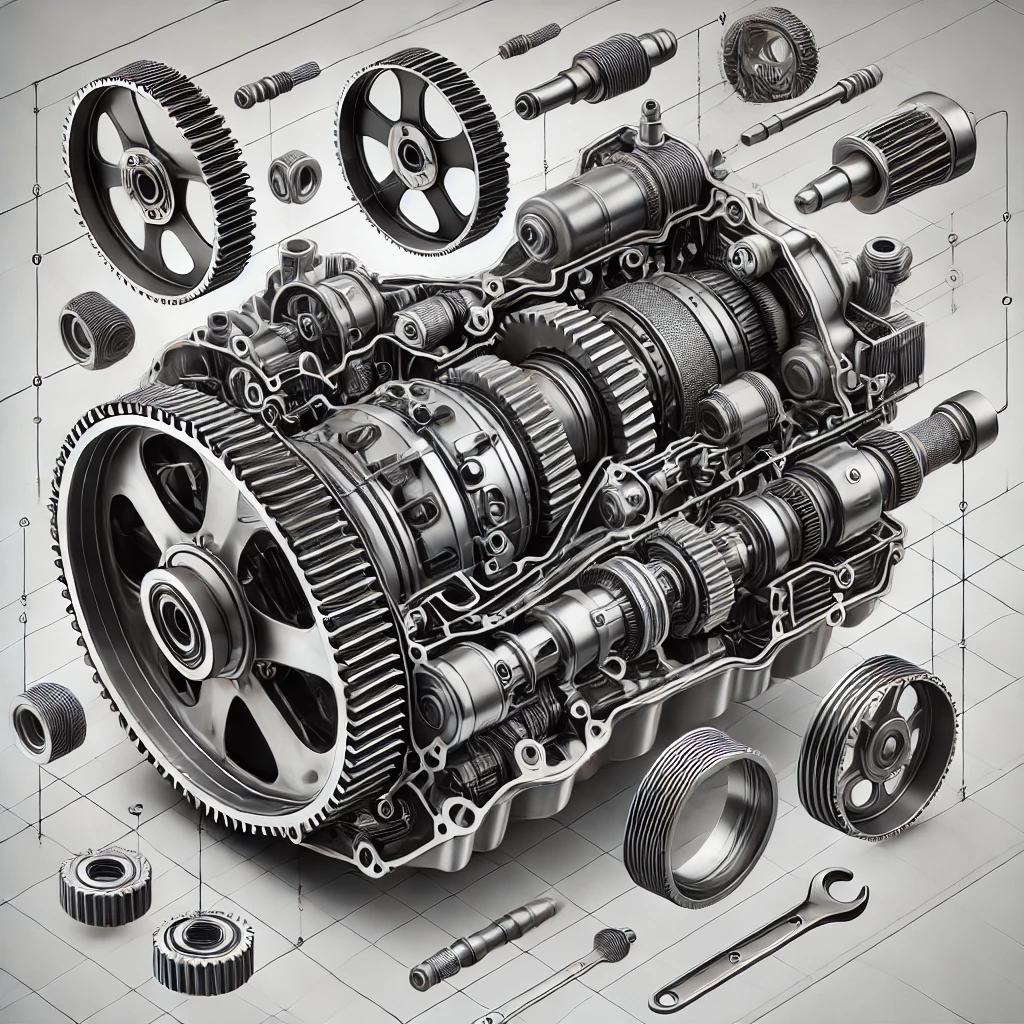Table of Contents

Transmission problems can be frustrating and expensive, but early detection and proper maintenance can save you time and money. Whether you’re driving a Toyota, Nissan, Lexus, or a Freightliner truck, understanding common transmission issues can help you avoid costly repairs. In this article, we’ll explore 10 common transmission problems, their causes, and how to fix them.
Types of Transmissions
Understanding the different types of transmissions can help diagnose issues and determine the best maintenance practices. The main types include:
- Manual Transmission – Requires the driver to manually shift gears using a clutch pedal and gear lever. Common issues include clutch wear and grinding gears.
- Automatic Transmission – Shifts gears automatically based on speed and load. Common problems include slipping gears, delayed shifting, and overheating.
- Continuously Variable Transmission (CVT) – Uses a belt and pulley system instead of gears for seamless acceleration. Prone to overheating and belt wear.
- Dual-Clutch Transmission (DCT) – Uses two clutches for smoother and faster gear shifts, but may experience jerky movements and high repair costs.
- Tiptronic Transmission – An automatic transmission with a manual mode, but can still develop typical automatic transmission issues.
10 Common Transmission Problems and Fixes
1. Slipping Gears
Symptoms: Your car unexpectedly changes gears or struggles to stay in gear.
Fix: Check transmission fluid levels and condition. Low or dirty fluid can cause slipping. If the issue persists, a professional inspection is needed.
2. Delayed or Rough Shifting
Symptoms: Hesitation or jerky movements when shifting gears.
Fix: Ensure transmission fluid is clean and at the correct level. If problems continue, it could indicate a failing transmission solenoid or worn clutch plates.
3. Overheating Transmission
Symptoms: Burning smell, warning lights, or poor performance.
Fix: Regularly check transmission fluid and ensure the cooling system is functioning properly. Overheating can cause severe transmission damage.
4. Unusual Noises
Symptoms: Whining, clunking, or grinding sounds while driving.
Fix: These noises could indicate worn bearings, gears, or a failing torque converter. Get a mechanic to inspect and repair any damaged components.
5. Transmission Fluid Leaks
Symptoms: Red or brown fluid spots under your vehicle.
Fix: Identify the source of the leak and replace worn seals or gaskets. Regularly checking fluid levels can prevent bigger problems.
6. Warning Lights on Dashboard
Symptoms: Transmission or check engine light is illuminated.
Fix: Use an OBD-II scanner to read trouble codes. It could indicate anything from minor sensor issues to major transmission failures.
7. Shuddering or Jerking in CVT Transmissions
Symptoms: Noticeable vibrations or hesitation during acceleration.
Fix: This is common in CVT transmissions like those found in Nissan vehicles. A CVT fluid change or software update may resolve the issue.
8. Hard Downshifts in Automatic Transmissions
Symptoms: Harsh or delayed downshifts when decelerating.
Fix: Could be caused by software glitches, low transmission fluid, or worn-out clutch packs. A transmission software reset or fluid change might help.
9. Torque Converter Failure
Symptoms: Loss of power, high RPMs with no acceleration, or slipping gears.
Fix: If the torque converter is faulty, it may need replacement. Regular transmission servicing can help prevent failures.
10. Premature Wear in Nissan CVT Transmissions
Symptoms: Poor performance, juddering, and overheating.
Fix: Nissan CVTs are known for premature failure. Frequent fluid changes and avoiding excessive loads can prolong their lifespan.
CVT Transmission Problems
Continuously Variable Transmissions (CVTs) are becoming more common, but they are prone to specific issues, including:
- Overheating – Due to constant belt friction, CVTs often overheat. Regularly checking and changing the CVT fluid can help mitigate this problem.
- Shuddering or Jerking – This is a sign of belt or pulley problems and may require a CVT fluid flush or belt replacement.
- Delayed Acceleration – The transmission fails to deliver power efficiently, which could be due to worn pulleys or transmission software issues.
- High Repair Costs – Unlike traditional transmissions, CVT repairs are expensive and often require complete replacements, making regular maintenance crucial.
Variable Transmission Problems
Variable transmissions, such as those found in hybrid vehicles, can develop the following issues:
- Erratic Gear Changes – Caused by software malfunctions or worn-out components, leading to rough or unpredictable shifts.
- Loss of Power – Reduced performance due to internal wear, which can affect acceleration and fuel efficiency.
- Fluid Contamination – Dirty or degraded transmission fluid leads to transmission failure over time. Regularly changing the fluid can help maintain smooth operation.
Transmission Problems in Popular Car Models

Toyota Supra
- Hard shifts and overheating – Check transmission fluid and cooling system.
- Manual clutch wear – Replace clutch plates if slipping occurs.
2009 Freightliner Cascadia
- Slipping gears and ECU faults – Diagnose electronic control unit for errors.
- Torque converter failure – May require replacement if experiencing power loss.
Nissan Vehicles
- CVT overheating and premature failure – Regular fluid changes and software updates can help extend lifespan.
- Juddering acceleration – May indicate worn belt or pulley.
2008 Lexus LS460
- Hard downshifts and acceleration lag – Check transmission fluid and software updates.
- Fluid leaks – Address promptly to prevent damage.
How to Prevent Transmission Problems
- Regular Maintenance – Follow manufacturer recommendations for fluid changes.
- Use the Right Fluid – Always use the specified transmission fluid.
- Avoid Aggressive Driving – Hard acceleration and abrupt stops wear down the transmission.
- Check for Leaks – Address minor leaks before they turn into major issues.
- Maintain the Cooling System – Overheating is a major cause of transmission failure.
Conclusion
Transmission problems can range from minor annoyances to severe mechanical failures. Whether you drive a Toyota Supra, Nissan, Freightliner, or Lexus, staying informed about common issues and performing regular maintenance can help prevent expensive repairs. If you notice any of the warning signs mentioned above, consult a professional mechanic to diagnose and fix the issue before it worsens.
By following these preventive measures, you can keep your transmission running smoothly and avoid unexpected breakdowns.

